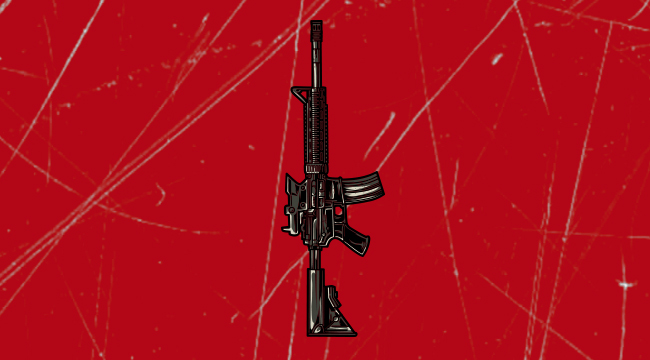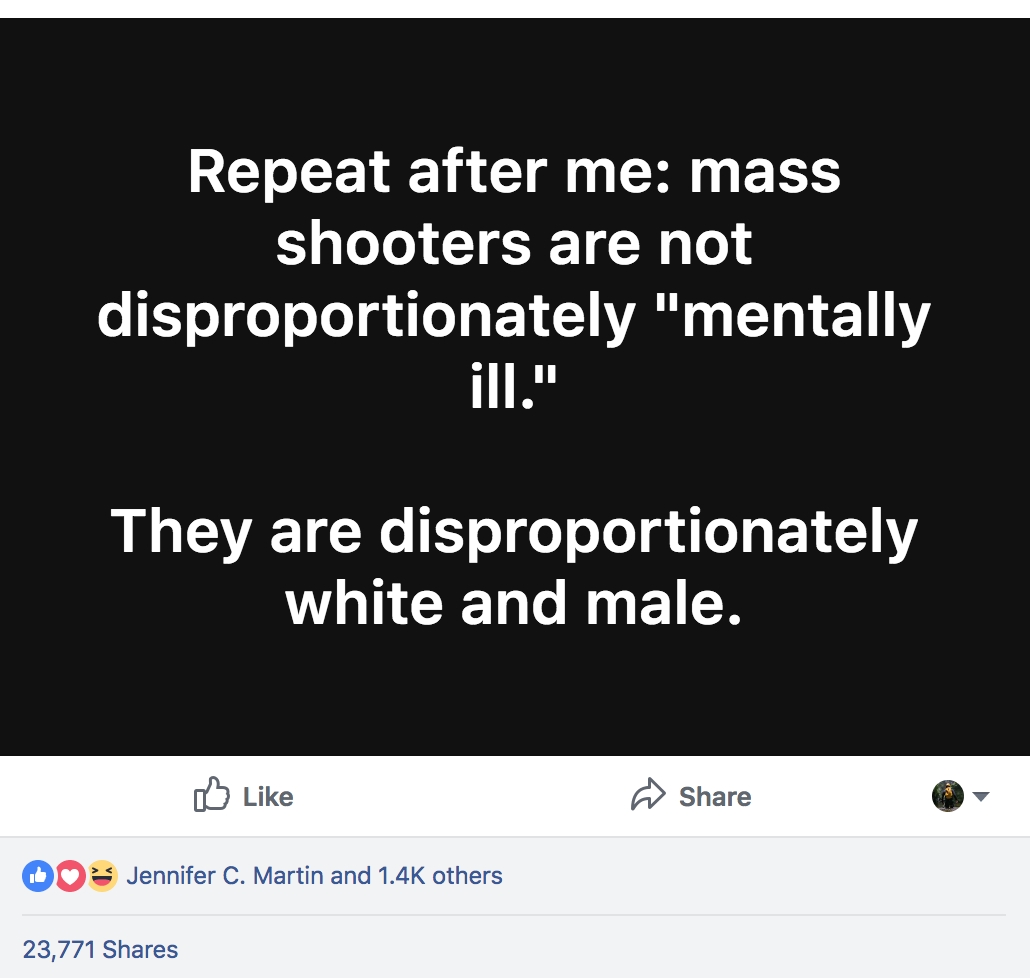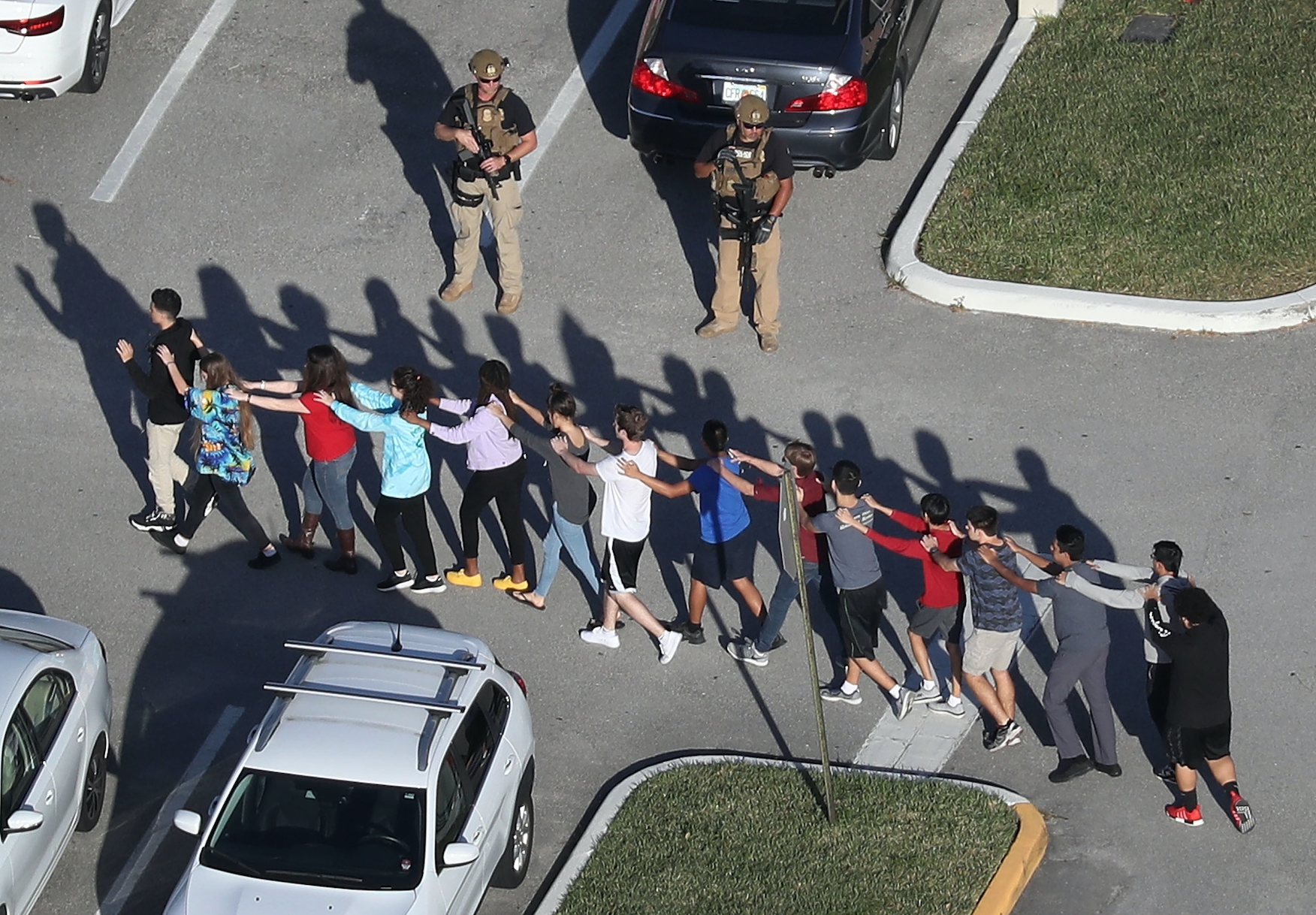
The responses poured forth the very moment that news of the Parkland massacre hit the internet. We’re so used to destruction, so thoroughly experienced in national agony that there was less lag time than ever. Memes, Facebook posts, and Tweets lit up our feeds — a digital ledger of the ideological fight over guns.
This is how the war is fought. In 2018, a simple, sentence-long message is essential. You want to preach to the choir? Write a think piece. The real social and political battles are waged with memes.
The pro-gun movement has proven absurdly good at this brand of conflict. After all, their messaging, dictated by the NRA, makes for a hell of an elevator pitch. It is, essentially, “guns don’t kill people, people kill people” — a callous response remixed in a zillion different ways, shooting after shooting. In the wake of Parkland, memes went viral asking why killings are always at gun-free zones and not gun ranges, insisting that none of the recent mass shooters have been active NRA members, and mocking the common liberal mistakes about assault weapon classification.
All these responses bucket neatly into the same place: Don’t blame us for the actions of the few. We’re the good guys… with guns.
On the other side of the spectrum, the gun control movement offers a more fragmented vision. New laws and restrictions are central to the conversation, sure, but the overarching message isn’t particularly easy to condense. Do you support a semi-automatic ban? That would include most guns on the market. An “assault weapons” ban? The designation is mushy and rarely used by gun owners themselves. Do you long for both government-supported mental health and gun laws? That actually serves the NRA’s mission — by leaving the onus on mentally ill shooters and giving the gun manufacturers an easy out.
To say that gun advocates communicate in a way that’s more easily distilled than their opponents is the understatement of the decade. They are clearer and more direct; shockingly succinct. They also never make the issue about more than one thing, like the meme below:

In the days after Parkland, that image was shared widely — first from a personal Facebook account, then by endless left-leaning Facebook pages. It serves as an interesting case study to reveal the difference between pro-gun and anti-gun messaging. First, the sentiment plays into the most common criticism of modern liberalism: That it’s easily divided and conquered by identity politics. That point is debatable. Surely, identity politics can have an important role in a world where a huge percentage of the population is marginalized.
The bigger problem is that the meme is demonstrably wrong. Twice.
Though the link isn’t overwhelming, modern academia clearly agrees that there is a correlation between mental illness and mass shootings (also see: here). The studies and papers on the issue do not go by the popular notion that “anyone who would kill all those people must be crazy” either. Instead, they limit their scope to serious mental illness and don’t include mass shooters who were depressive, anti-social, or paranoid (this broader definition would encompass virtually all of them).
Still, the New York Times cites a definite link — noting that 22% of mass killers using firearms could be considered mentally ill — as does Mother Jones. This isn’t statistical parsing. The prevalence of serious mental illness (the standard used in the papers above) in the US hovers around 4%. Mass shooters — taken as a demographic — well exceed that number.
Mass shooters also aren’t disproportionately white. The Mother Jones comprehensive mass shooting database reports that roughly 70% of all mass shooters have been white since 1982. That’s certainly a lot, but when compared to the demographics of our country over the same time period, it’s clear that whites are actually underrepresented — statistically speaking — as the perpetrators of shootings in a public space with four or more victims. (If you alter the Mother Jones definition to increase the death count, that breakdown changes. And that’s not to say there aren’t other racial issues at play with how our culture responds to school shootings.)
For what it’s worth, the final point of this popular meme is absolutely true. Men are the common factor in an overwhelming majority of mass shootings, far exceeding the roughly 1:1 ratio of men vs. women in our country.
Why bother holding an internet meme to this sort of factual review? Why skewer a civilian’s Facebook post? It clearly created an emotional response in people and very well may have spurred them to action. Does “truth value” even matter in the meme wars?
It’s not just about supporting facts or even intellectual honesty. The “no NRA members carried out mass shootings” meme is just as easily sliced to ribbons. First, the NRA fights for all gun owners, regardless of membership, so the point is moot; and second, the NRA doesn’t release their member list so the assertion is impossible to verify. The real issue is that the anti-gun meme — which was remixed in Tweets and think pieces over the course of the week — tries to do too much. It takes on the media (who reports mass shootings), mental illness, and race. In doing so, the message splinters, fragmenting and losing its force.
The result? The photo above fails at copying the NRA’s greatest trick: Pick a single, cohesive message and stick to it. Never let it go. Lock in and don’t f*cking stop.

The idea here isn’t to demand better internet memes or to fact check people’s Facebooking. It’s a jumping off point to talk about how we share thoughts on issues that affect us all. Because nearly 20 years after Columbine, we’ve seen that the NRA — kings of the succinct mission statement — beat the gun control advocates over and over.
They exhaust, distract, and sidetrack their opponents. And their wins lead to loss of life.
That last sentence can be proven without heavy debate: More people have died because guns under the current laws than would have died under stricter laws. You can fight for the second amendment all you want, but you certainly can’t claim that the number of deaths across the country would be absolutely static with fewer guns. There’s just no metric to support it. Even if a single accidental gun death was prevented (and it would be), the net number would decrease.
The point then is that it’s time for the anti-gun movement to stop trying to do three things at once and just stick to one core message that doesn’t alienate any part of their base. They need to use their money and their masses to amplify this same message over and over and financially support legislation that underscores it. They need to stay with it when there aren’t mass shootings and scream it immediately when there are.
They need a rallying cry on par with “guns don’t kill people…” A single, concise, precise focus.
If that’s what the movement is finally ready for, these three stats seem particularly potent.
- Virtually all of the 10 deadliest mass shootings in the United States used an AR-15 style assault rifle made by Colt (or a facsimile of the same weapon made by a competitor).
- The overwhelming majority of mass shootings were carried out with legally purchased guns.
- More than half of all mass shootings were carried out with high capacity magazines.
Those facts are locked in. They aren’t abstract ideas. They can’t be picked apart by people on the internet. They’re also short and sweet and don’t require mental gymnastics to fathom.
This is what the NRA does, habitually, and part of why their message is so successful. There are no bigger issues at stake for them. No side points (however worthy) they’re trying to layer in. Just guns. It’s all they care about and they’re loathe to complicate things any more than that. After tragedies, they wait — repeating their refrain — while gun control advocates bicker into oblivion. Over and over and over.
Imagine the massive force of a unified anti-gun movement laser-focused on banning legally purchased, high-capacity magazine-accommodating, semi-automatic assault rifles? Imagine if the legal purchasing of these guns was tightened and taxed so much that Colt’s corporate face — so brazenly unrepentant in light of dead children — turned blue? Imagine the brand that posted this gross, almost self-parodying Instagram on the same day of the massacre actually fearing the singularly focused gun control-advocating masses.
If that day comes, when the movement finally decides to steal techniques from their enemies, you will see the real fight begin in full. You will realize that the numbers actually favor gun control. That Everytown has the capacity to raise NRA-levels of cash. You’ll see a movement with a clarified mission and less tendency to get distracted. You will watch change be enacted through a new set of leaders on both state and national levels.
Then, the NRA will truly be scared. Quaking in their boots.
And that day can’t come soon enough. Because the fight about who has the clearer messaging and who can change minds with a single sentence is, quite obviously, a battle for life and death.
